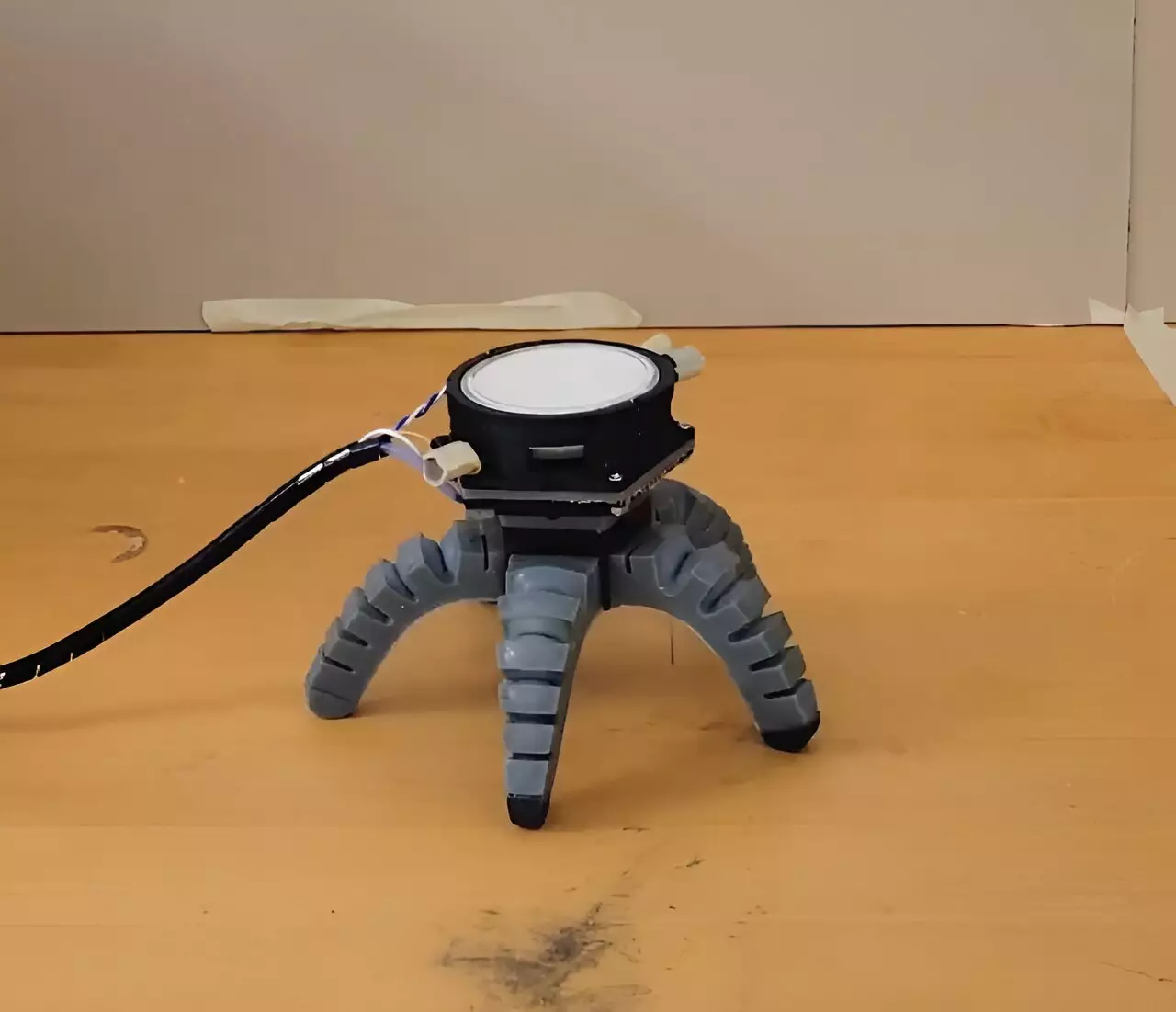In recent advancements within the field of robotics, researchers at Cornell University have ventured into the realm of biohybrid robots—creatures that merge biological elements with mechanical systems. Led by Anand Mishra in the Organic Robotics Lab under the guidance of Rob Shepherd, these engineers are exploring the innate abilities of fungal mycelia to create robots that can react to environmental stimuli more effectively than traditional machines. The potential applications of this research extend far beyond mere robotics, reflecting a profound shift in how we understand and interact with living organisms and technology.
Mycelia, the vegetative part of fungi, serve as the foundation for mushroom growth and play a crucial role in nutrient cycling within ecosystems. What makes fungal mycelia especially fascinating is their aptitude for sensing various environmental signals. Unlike conventional passive sensors that operate under predetermined criteria, mycelia exhibit adaptable behaviors—they can respond to light, heat, and chemical changes in their surroundings. This characteristic positions them as invaluable components in the development of robots that can autonomously navigate unpredictable environments.
Mishra highlighted that relying on living systems like mycelia can significantly enhance a robot’s ability to react to unforeseen variables. “If you think about a synthetic system, we just use it for one purpose. But living systems respond to touch, they respond to light, they respond to heat,” he remarked, emphasizing the multi-sensory capabilities afforded by biohybrid designs.
Integrating mycelia into robotic systems is no simple feat. It necessitates a blend of expertise across multiple scientific domains, including mechanical engineering, electronics, mycology, and neurobiology. Mishra’s collaborative approach exemplifies the interdisciplinary nature of this effort. With guidance from specialists like Bruce Johnson in neurobiology and Kathie Hodge in plant pathology, Mishra overcame challenges in successfully measuring the electrical signals generated by mycelia and cultivating pure cultures of fungi free from contamination.
Notably, the electrical signals are generated via ionic channels that are analogous to those found in neurons. These signals provide a real-time glimpse into the mycelial response to external stimuli. By developing a platform capable of interpreting these signals and translating them into control commands, the researchers established a prototype that could operate based on the mycelia’s responses.
Two distinctive robots—a soft-bodied spider-like robot and a wheeled variant—were constructed for testing purposes. The experiments yielded fascinating results, wherein the robots were able to move in response to the natural electrical spikes emitted by the mycelia. Additionally, the introduction of ultraviolet light provided another layer of complexity, prompting the robots to adjust their gaits in accordance with the environmental light inputs.
The researchers also demonstrated the capability to override the mycelial signals, effectively controlling the robots in situations where complete autonomy was not ideal. These experiments illustrate that the integration of living tissue allows for sophisticated interactions between robots and their environment, potentially granting these machines a new dimension of intelligence.
While the project’s primary focus lies in robotics, its broader implications touch on ecological sustainability and environmental monitoring. Robots equipped with mycelial sensors could eventually perform tasks such as assessing soil conditions or identifying ecological stressors—actions that could greatly benefit agricultural practices. For instance, such robots could autonomously detect soil chemistry variations, thereby optimizing fertilizer application and minimizing the ecological impacts tied to agricultural runoff.
Furthermore, the researchers contend that their work not only explores how technology can be improved but also establishes a symbiotic relationship between technology and living systems. As Mishra conveys, “Once you hear the signal, you also understand what’s going on. Maybe that signal is coming from some kind of stresses.” This concept underscores an essential aspect of robotics—capturing and visualizing signals ordinarily imperceptible to human senses.
The exploration of fungal mycelia as a controller for biohybrid robots marks a significant leap in the field of robotics, merging the mechanical with the biological in unprecedented ways. Through interdisciplinary collaboration and groundbreaking experimentation, researchers are paving the way for a future where robots not only mimic life but also draw from it, offering a more profound and intelligent interaction with the environment. This innovative approach could herald a new era in robotics wherein machines become more adept at navigating the complexities of the natural world.


Leave a Reply